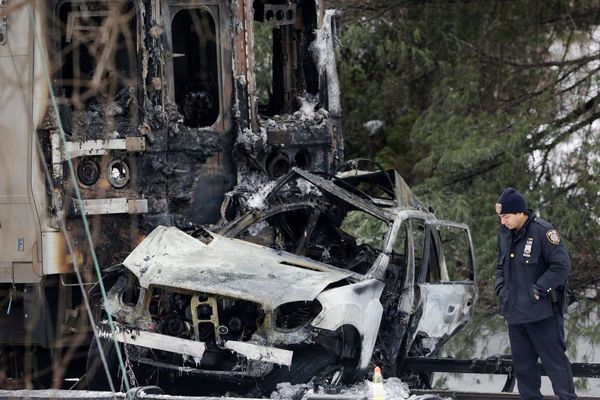
For the past 50 years, red-blooded Americans have enjoyed a freedom the Founding Fathers hardly dreamed of: the ability to turn right on a red light. But with pedestrian fatalities at a four-decade high, a movement is afoot to change that.
This month, San Francisco supervisors unanimously voiced support for a ban on right-on-red. Last year, the practice was banned in Cambridge, Massachusetts. New York has long barred it, Denver could soon, and Washington DC has taken steps toward a ban. Seattle, meanwhile, has made no-right-on-red the city’s “default” policy at new traffic signals. A growing media chorus agrees it’s time for change.
The shift comes as pedestrian deaths in the US soar to their highest levels since 1981. Last year, at least 7,508 people were killed while walking, according to a report by the non-profit Governors Highway Safety Association, which also found a 77% increase in fatalities between 2010 and 2021.
There are many possible reasons for this, including the popularity of SUVs, more people walking in suburbs built for cars, and reckless driving that worsened during Covid. Banning right turns on red lights certainly wouldn’t eliminate all pedestrian deaths – but it could help, advocates say.
“The key to safe streets is predictability – me knowing what you’re going to do and you knowing what I’m going to do and therefore we navigate the space together,” says John Yi, executive director of Los Angeles Walks, a pedestrian advocacy non-profit in a city known for its car culture. A ban on right-on-red, he says, “creates more predictability”.
People for Bikes, a national organization aimed at getting more people cycling, includes a call for a ban in its model legislation. “Intersections are a really important part of improving road safety. It’s where we tend to see the most conflicts between people biking and people driving,” says Martina Haggerty, the organization’s senior director of local innovation.
Turning right on red was only legal in a few states until the 1970s, when the federal government, facing an oil crisis, told states to allow it – or lose their energy funding. The idea was that cars would use less fuel if they avoided sitting at red lights. That law remains in place, despite research from 1984 showing that at intersections allowing right-on-red, crashes jump 23%, pedestrian crashes increase by 60%, and cyclist crashes double.
Perhaps this was partially related to uncertainty over new laws – but a study last year raises similar concerns. When University of Toronto researchers equipped drivers with glasses that tracked their eye movements, they found that drivers generally kept a close eye on pedestrians – but their attention was “heavily skewed” toward the left at intersections, as they looked for a gap in traffic so they could turn right. (Canada, like the US, generally allows right-on-red.)
“Attention is a limited resource,” says Birsen Donmez, an author of the study. When drivers are focused on finding a gap, they have less capacity to track pedestrians trying to cross in front of them.
Donmez, who has lived in the US and Canada, says she would support banning right turns on red lights – in fact, she says, the best-case scenario would be “fully protected” turns, in which pedestrian and vehicle crossings are entirely isolated from each other.
But supporters of a ban acknowledge the barriers to change, especially at a federal level. “There’s a car-centric culture in parts of the US,” she says. “If your main form of transportation is with a car and you don’t get the chance to walk because it’s not walkable, I can see why people say: ‘This is going to hurt me and I don’t see the value.’”
Yi, the pedestrian advocate, agrees. “I’m a driver myself, and oftentimes, we are in streets that are incredibly busy, traffic congested, and many see a right turn on red as a means of getting home faster,” he says. Especially in Los Angeles, anything that would slow traffic “causes anxiety”.
And some engineers still see fuel savings and a reduction in air pollution as perks in favor of turning right on red. But Haggerty, of People for Bikes, argues “the benefit of saving lives far outweighs the fuel savings here, especially as we push to reduce vehicle miles travelled and switch to more fuel efficient cars and EVs”.
What’s more, when it comes to eco-friendly cycling, “infrastructure tends to be the biggest barrier to participation because of the very real fear of personal safety when riding a bike,” she notes. “And so to create a more bike-friendly environment for people, we really have to improve road safety everywhere.”
Donmez says when we allow right turns on red, “we are putting the drivers in a situation where they’re gonna fail for sure. Not all the time, right? It’s rare these things happen,” she notes. “But at the same time, we’re looking at millions of interactions, and crashes do happen, and people die. Even a single person’s life being lost due to this – that’s unacceptable.”







